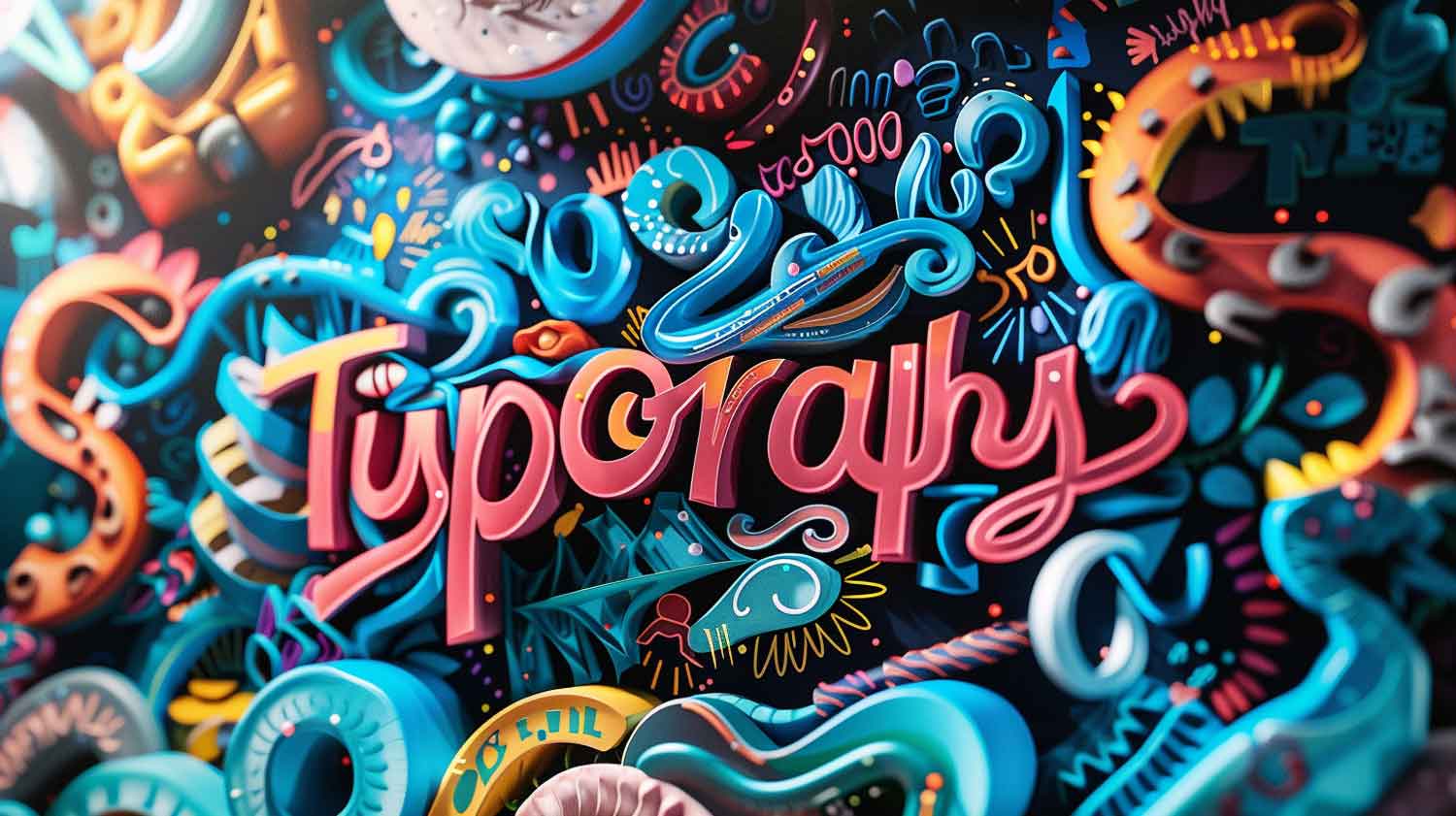Find the Right Font for Your Brand Identity: Mastering Typography in Branding
Are you looking to create a strong brand identity that leaves a lasting impression? One of the key elements to consider is typography. The right font can evoke the desired emotions, convey your brand personality, and make your mark in both digital and traditional channels.
In this article, we will delve into the world of brand typography, exploring how fonts play a crucial role in shaping brand identity. We will guide you in finding the perfect fonts for your brand and provide insights on typography in branding.
Why Typography in Branding Matters
Typography is often an overlooked element of branding, but it play a specific role in shaping your brand identity and creating a lasting impression on your audience. The fonts you choose, the way you arrange them, and the overall typographic style you adopt all contribute to how your brand is perceived. Just like a carefully chosen color palette or a well-designed logo, your brand typography can evoke emotions, communicate your professional brand values, and set you apart from your brand components.
Understanding Brand Fonts and Typeface Selection
Before diving into the specifics of brand typography, let’s clarify the difference between fonts and typefaces. A typeface is the overall good design of a set of characters, while a font is a specific variation of that typeface with a particular weight, size, and style (e.g., Helvetica Bold, Times New Roman Italic). When picking fonts for your brand, consider the following factors:
- Serif vs. Sans Serif: Serif fonts have small decorative strokes at the ends of the letter strokes, while sans serif fonts do not. Serif fonts are clean and often convey a sense of tradition and elegance, while sans-serif fonts are perceived as more modern and minimalist.
- Script Fonts: Script fonts resemble handwriting and can add a personal touch to your brand. However, they can be difficult to read at small sizes, so use them sparingly.
- Font Style: Consider the weight, width, and spacing of the font you choose. Bold fonts can make a statement, while light fonts can be more subtle. Wider fonts can be easier to read, while narrower fonts can create a more sophisticated look.
Establishing Brand Guidelines for Typography
To ensure consistency and coherence in your brand communications, it’s essential to create brand typography guidelines. These guidelines should specify the following:
- Brand Fonts: Choose a primary and secondary font (and perhaps a few accent fonts) that will be used consistently across all your branding materials, from your website and marketing materials to your social media posts and packaging.
- Font Sizes and Weights: Define the specific sizes and weights you will use for different types of content, such as headings, body text, and captions.
- Spacing and Alignment: Define the spacing between letters, lines, and paragraphs to create a visually appealing and consistent look.
Best Examples of Brand Typography
Some brands have mastered the art of using typography to communicate their brand identity and values. Here are a few examples:
- Coca-Cola: The iconic Coca-Cola logo uses a script font that is both elegant and playful, perfectly reflecting the brand’s personality.
- Apple: Apple’s brand typography is clean and minimalist, reflecting the brand’s focus on simplicity and innovation.
- Chanel: Chanel’s brand typography is sophisticated and classic, reflecting the brand’s reputation for luxury and elegance.
The Impact of Typography on Brand Recognition
A well-defined and consistent brand typography can play a significant role in brand recognition. When people see your fonts consistently used across your marketing materials, they will start to associate those fonts with your brand. This can help you build brand awareness and make it easier for people to remember your brand.
Choosing the Right Fonts for Your Brand Identity
Typography isn’t just about making your text look pretty; it’s about using typefaces and fonts to communicate your brand’s personality and values. Picking the perfect fonts for your brand is a crucial step in crafting a consistent brand image that resonates with your audience.
Here’s everything you need to know about choosing the best typography for your brand:
Understanding Specific Brand Voice and Fonts:
- Brand voice is the unique personality you want to project through your communications. Just like your writing style, it should be consistent across all your touchpoints.
- Fonts are visual representations that suits your values of your brand.
- Font convey the tone of your brand through their style, weight, and overall feel.
- Friendly and approachable brands: Opt for sans-serif fonts with rounded edges, like Helvetica or Calibri.
- Formal and sophisticated brands: Consider serif fonts with sharp edges, like Times New Roman or Garamond.
- Creative and playful brands: Explore script fonts or decorative letterforms, but use them sparingly for readability.
Finding the Perfect Font Fit:
- Multiple sizes and weights: Fonts are usually available in many sizes and weights for different use cases (headings, body text, captions).
- Professional and legible: Ensure your fonts are clear, easy to read on all devices, and maintain professionalism.
- Role in your design system: Integrate your chosen fonts seamlessly into your brand’s design system, ensuring consistency across all branding elements.
Typography in Branding Design:
Brand typography is a visual language, so use it consistently across all your branding design elements, from your logo and website to your marketing materials and social media posts.
Here’s how to create a consistent visual identity:
- Choose a brand font family with multiple weights and styles.
- Define specific sizes and weights for different types of content.
- Use consistent spacing and alignment to create a clean and organized look.
Handwritten Fonts: Adding a Personal Touch to Your Brand
Handwritten fonts can add a personal touch to your brand and make it feel more authentic. However, use them sparingly and choose fonts that are still clear and easy to read.
Here are some tips for using fonts:
- Use them for accents or headlines, not for body text.
- Choose bolder fonts with clear letterforms and consistent spacing.
- Make sure the fonts are available in multiple sizes and weights for flexibility.
Legibility and Readability:
From ensuring clarity in brand messaging to optimizing user experience, legible and readable fonts are paramount in successful brand communication. The most important aspect of custom typography for your brand is that it is legible and readable. Your fonts should be clear on all devices and screen sizes.
Here are some tips for ensuring legibility and readability:
- Avoid using overly decorative fonts or selecting fonts that are too small.
- Use high-contrast brand colors for text and background.
- Test your fonts on different devices to make sure they are easily read.
The Role of Strong Brand Typography in Different Platforms
Your brand typography needs to be adapted to the different platforms you use to communicate with your audience. For example, the fonts you use on your website may not be suitable for your social media posts. Consider the following factors when choosing brand fonts for various platforms:
- Screen size: Fonts need to be larger and bolder on smaller screens, such as smartphones.
- Viewing distance: People are more likely to be viewing your website from a distance than they are your social media posts, so you can use slightly smaller fonts on your website.
- Content type: Use different fonts for headings, body text, and captions to create visual hierarchy and make your content scannable.
Conclusion: Making Your Mark with Typography
In the intricate dance of design, fonts play a lead role in defining a brand’s visual identity. From the choice of fonts to the creation of a comprehensive brand style guide, every decision contributes to how a brand is perceived. Typography is not just a visual element; it is a language that communicates your brand value, tone, and personality.
As you navigate the vast world of fonts, keep in mind that choosing the best font is not just a design decision—it’s a strategic move to create a great brand look. A brand that wants to convey its brand values through typography, has the power to make a lasting impression, evoke emotions, and establish a unique visual language.
In conclusion, whether you’re crafting a brand from scratch or revamping an existing one, the careful consideration of typography is paramount. By understanding the intricacies of fonts, establishing clear brand guidelines, and embracing the impact of typography on brand recognition, you can get into the competitive world of branding. So, go ahead, choose the fonts that reflect your brand’s vision, and let your typography tell a compelling story.






